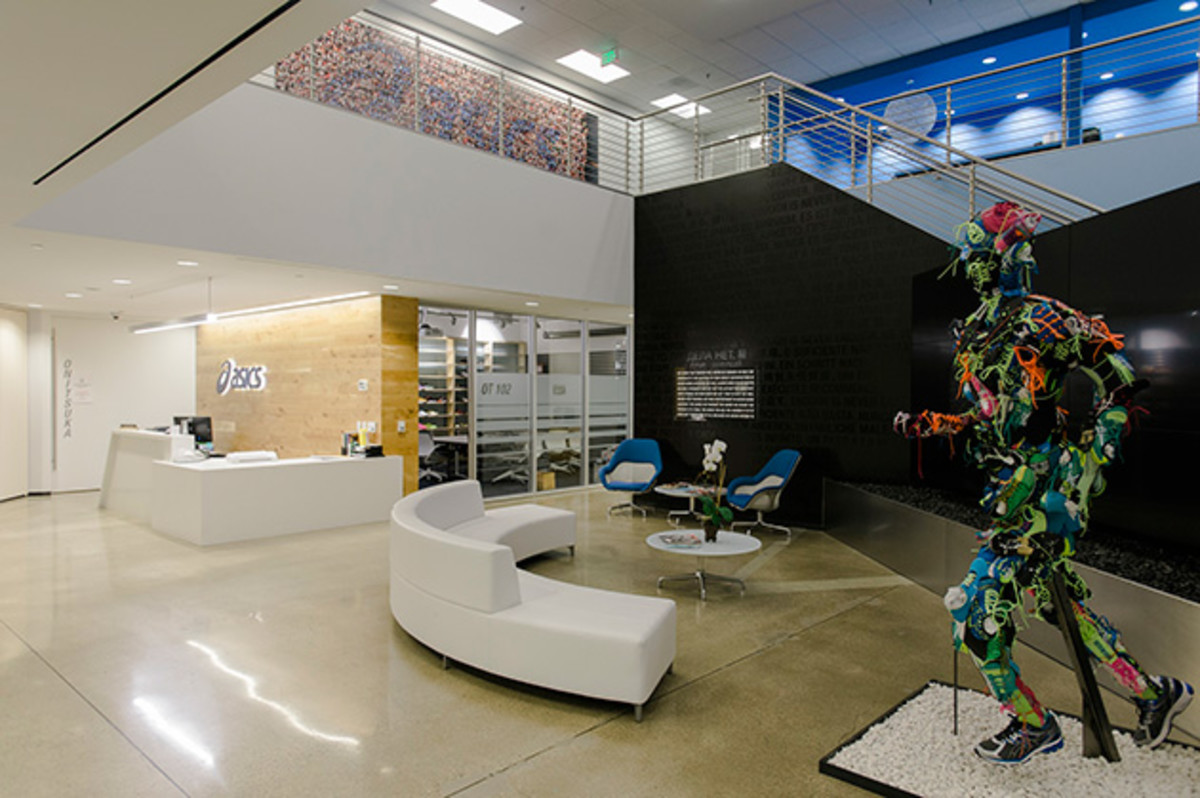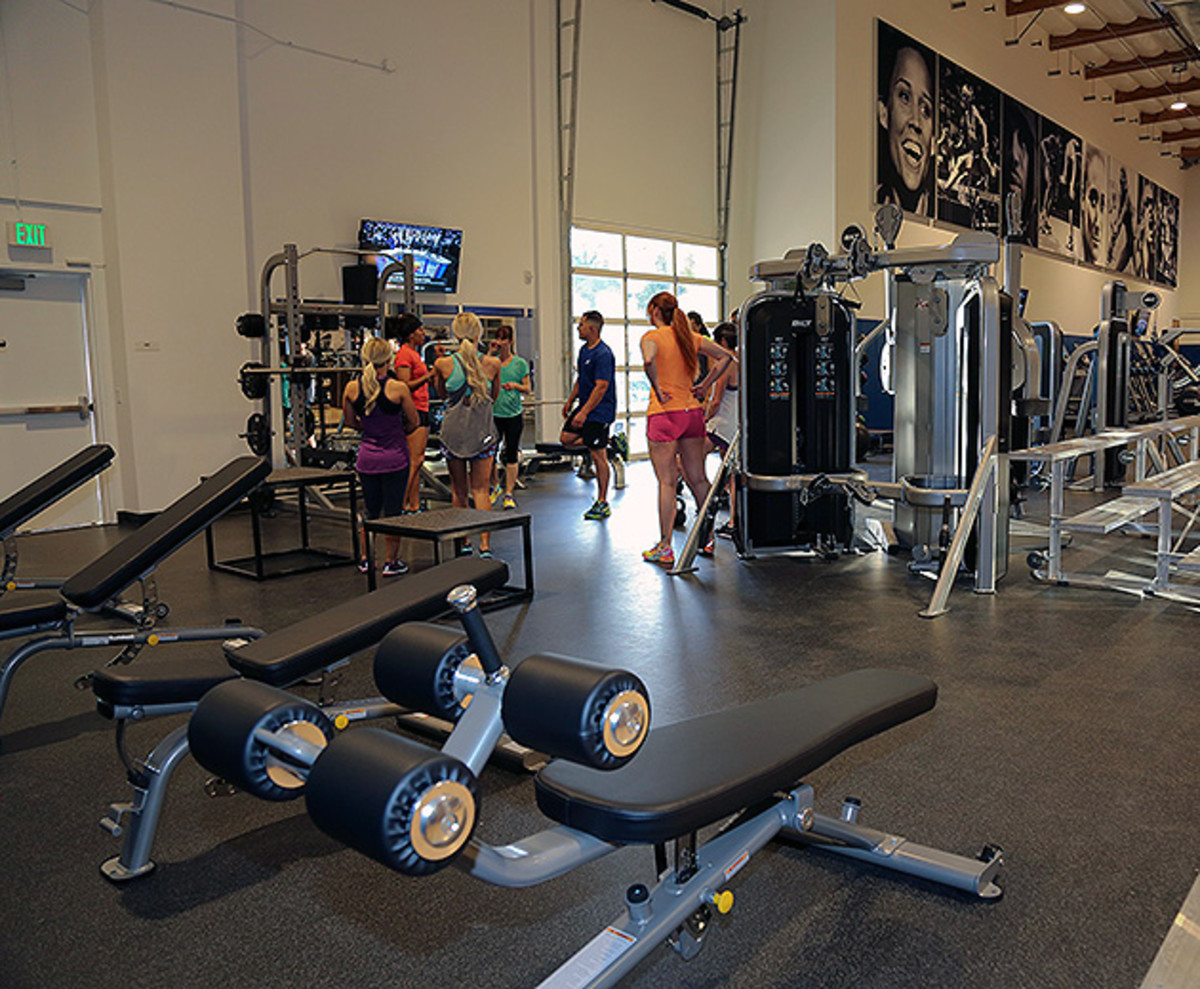Sweat Mecca: Inside the Asics sports performance lab in California

Inside the new Asics sports performance center in Irvine, Calif., it may come in the form of a spirited game of basketball between employees. Or maybe you see a professional athlete training by using custom-designed equipment. Or maybe, just maybe, you see it all happening at the same time, a boxer training, an employee playing volleyball and an NFL player working in the new sports science lab.
“I think it has been a dynamic change, a change that has brought our team together,” Kevin Wulff, Asics America president and CEO, tells SI.com. “In the early morning, the noon lunch period and early evening you see spirited basketball and volleyball games, a lot of group training, people getting together.”
The over 50,000 square feet of space includes space for employees to exercise, from a full-size NBA basketball court and volleyball court with bleachers to hold 250 to a full training center and even a science lab run by Gavin MacMillan, president and founder of Sports Science Lab, just three sliding doors away.
Lindsey Vonn's winter success is built on dedicated summer training
Opened in March 2015, Asics has already used the space to bring in elite high school, collegiate and professional athletes from all different types of sports for training and product testing.
“In terms of athletes and our ability to test products, we are using it frequently,” Wulff says. From USA Volleyball national teams to NBA players, Wulff says the use of the facility has only grown since the center opened.
Having a place for employees to come together and test the products they are creating coupled with the buzz generated by bringing elite athletes on campus, Wulff says the training center has created a fresh excitement and helped Asics build a comprehensive wellness program complete with a nutritionist working out of the center.
The gym was designed to show off Asics, with product placement to larger-than-life graphics of athletes. And because of the environment, Asics has also used the facility for photography of product and athletes and company meetings.

is already doing in regard to testing at its Japan headquarters.
“We wanted to make sure his principles aligned with our principles in how we design and develop products,” Wulff says. “Next we wanted to get the right equipment to handle elite training for many types of sports.”
MacMillan has designed all of his own equipment for the lab. “We train some of the biggest names in sports, so techniques, their principles, their rehab, injury prevention, all the other things that accelerate and take performance to other levels, it is distinctly different,” Wulff says.
Adjacent to the basketball court and connected by three sliding doors that open to make athletes comfortable rests MacMillan’s lab and equipment, built based on principles established by the Russians in the 1960s through ‘80s, he tells SI.com.

Instead of using the old Olympic weightlifting model of initial gains and then a plateau still popular through much of the U.S., MacMillan has put a focus on measuring force accurately and providing fitness and rehabilitation tools that improve an athlete’s ability within their sport while eliminating the injury risk during training, whether with training equipment or software systems.
For example, boxer Miguel Cotto trains with MacMillan. “You can not hurt him,” he says, “there is too much money at stake. You have to eliminate the risk of hurt.” That’s where “resistance generated by force you apply” comes into play throughout training and the equipment used.
“Everything we do has a science-based application that is proven to work,” MacMillan says.
As MacMillan continues to embrace the “laboratory” side of his work with a pursuit of improvement, the facility will soon expand as work is wrapping up on the aquatic portion of the facility for both rehabilitation and performance.
Wulff says the creation of the facility was for both employees and athletes. “If you train for two weeks or four weeks or you are getting ready for the draft, you get a nutritionist, acupuncture, massage, chiropractic, full medical testing, blood work, sports psychologists,” he says. “We want them to feel like they can do everything, feel at home and come back as frequently as needed.”
Maybe they will.
Tim Newcomb covers stadiums, design and gear for Sports Illustrated. Follow him on Twitter at @tdnewcomb.
